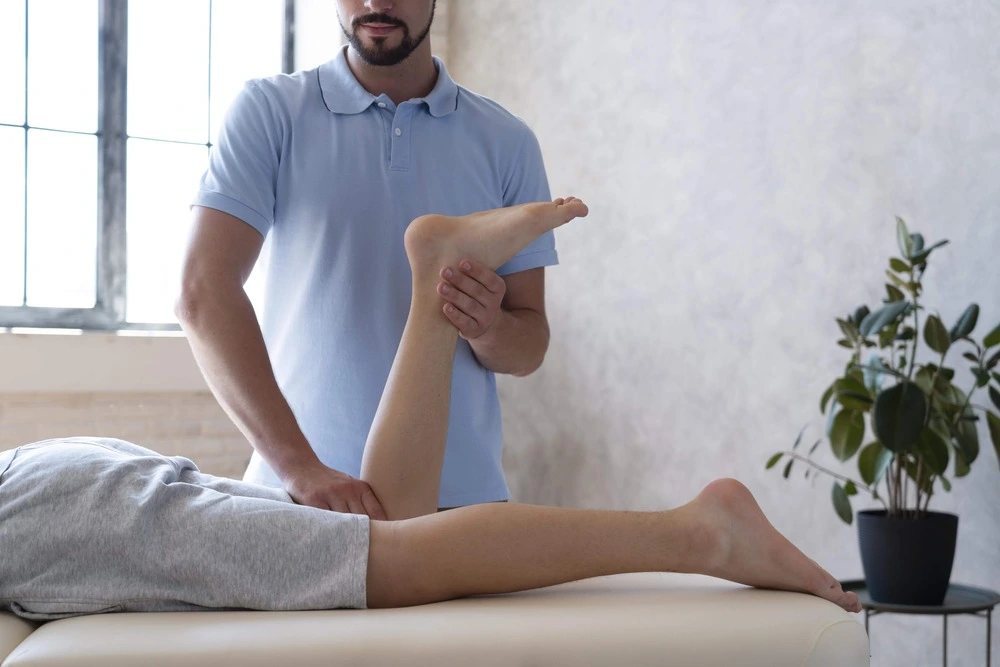How to Create a Personalized Stretching Routine for Flexibility

Published On : 04 Feb 2024
Flexibility is a vital component of overall fitness and wellness. Whether you're an athlete, a fitness enthusiast, or someone looking to alleviate bodily discomfort, developing a personalized stretching routine can significantly enhance your flexibility.
Understanding Stretching:
Stretching is an exercise that involves elongating the muscles to improve muscle elasticity and flexibility. It's broadly categorized into two types: active and passive stretching.
Active stretching is a type of stretching where muscles are stretched using the strength of the agonist (the muscle opposite the one being stretched), while passive stretching, or passive stretch test, is where you hold a stretch using your body weight or an external force without actively contracting the muscle.
Benefits of Active Stretching:
Active stretching provides numerous benefits, chief among them being an improvement in flexibility and joint range of motion. Engaging opposing muscle groups, not only enhances the stretch but also strengthens the muscles being used to create the stretch.
Benefits of Passive Stretching:
Passive stretching is particularly beneficial for improving flexibility and range of motion. It's often used in hamstring stretch sedentary routines and can also be effective in stretches to relieve back pain. Relaxing into the space and holding it for a prolonged period, typically 30 seconds to a minute, allows your muscles to lengthen and loosen gradually.
Advantages of Passive Over Active Stretching
Passive stretching is particularly effective in improving overall flexibility and joint range of motion.
Passive stretching is especially beneficial for individuals working on improving their range of motion, whether for athletic performance, rehabilitation, or general fitness.
Passive stretching is generally more relaxing than active stretching because it requires less physical effort. The body is not actively working to hold the stretch
It's also beneficial for individuals with physical limitations or those who are new to stretching. Since it's less demanding and can be easily adjusted
The involvement of external forces in passive stretching allows the muscles to stretch further than they might in active stretching.
Setting Your Stretching Routine:
Assessment:
Begin with a passive stretch test to assess your current flexibility levels. This involves stretching a muscle to its furthest point and holding it without pain. Identifying tight areas will help you determine the focus of your routine.
Set Goals:
Are you aiming to improve general flexibility, focusing on particular muscle groups like hamstrings, or using stretches to relieve back pain? Setting clear goals will tailor your routine to your specific needs.
Choosing the Right Stretches:
For overall flexibility, incorporate a variety of stretches that target major muscle groups. Concentrate on exercises targeting the hamstrings for specific needs, like hamstring stretch passive routines. Ensure you include upper and lower body stretches to maintain overall body balance, even if your focus is on one area.
Passive Stretching Techniques:
Hamstring Stretch Passive: Sit on the ground, extend one leg out, and bend the other so your foot is against the opposite inner thigh. Reach towards your foot of the straight leg, holding the stretch without straining.
Stretches to Relieve Back Pain: Try a passive lower back stretch by lying on your back, pulling your knees to your chest, and holding them there.
Frequency and Duration:
Consistency is key. Stretch daily or at least 3-4 times a week. Spend 5-10 minutes per session, holding each passive stretch for 30 seconds to a minute.
Progress Tracking:
Keep a log of your stretching sessions, noting flexibility or pain reduction improvements. This will help in adjusting your routine as needed.
Expanding Your Routine:
As you become more comfortable with your basic stretching routine, exploring additional stretches that can enhance your flexibility, mainly focusing on passive stretching techniques, is essential.
Incorporating Variety:
Introducing new stretches can prevent your routine from becoming monotonous. Experiment with different types of passive stretches, such as a seated forward bend for the hamstrings or a butterfly stretch for the inner thighs. This variety keeps your routine exciting and ensures a comprehensive approach to flexibility.
Advanced Passive Stretching:
Once comfortable with basic stretches, you can gradually move to more advanced passive stretching exercises. For instance, the reclined hamstring stretch using a towel or a strap can intensify your hamstring stretch passive routine, providing deeper freedom and increasing flexibility over time.
Targeted Stretches for Back Pain:
Integrating specific stretches into your routine to relieve back pain is crucial if back pain is a concern. Gentle yoga poses like Child's Pose or Cat-Cow stretches can be incredibly beneficial. These passive stretches allow your back muscles to relax and elongate, reducing tension and discomfort.
Mindfulness and Relaxation:
Combining your stretching routine with mindfulness techniques can enhance the effectiveness of the stretches, especially in passive stretching. Focus on your breathing and the sensations in your muscles during each stretch. This mind-body connection can help release tension and improve the stretch's quality.
Regular Reassessment:
Periodically reassess your flexibility using the passive stretch test. This will help you track your progress and adjust your routine as needed. It's important to recognize and celebrate the improvements in your flexibility, as this will motivate you to maintain and enhance your routine.
Integrating Stretching into Daily Life:
Incorporating passive stretching into your daily routine can be simple and effective. Take short breaks throughout the day to perform a few stretches, especially if you have a sedentary lifestyle.
Developing a personalized stretching routine that includes passive stretching, targeted hamstring stretches, passive exercises, and stretches to relieve back pain can profoundly impact your flexibility and overall well-being. Remember, the journey to improved flexibility is gradual, and consistent practice is the key to success. Embrace the process and enjoy the journey towards a more flexible, healthier you.
Are you ready to take your flexibility and wellness journey to the next level?
L'ANATOMIE is here to support you every step of the way.